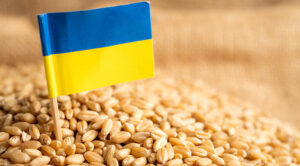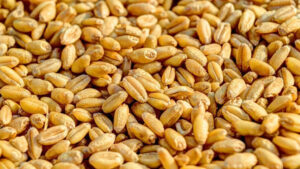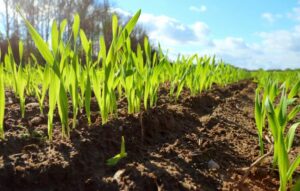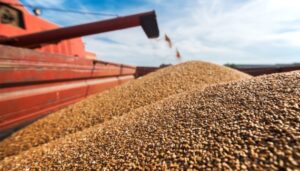
As of June 4, Ukraine had exported 38.505 million tons of grains and legumes since the beginning of the 2024-2025 marketing year (July-June), of which 202,000 tons were shipped this month, according to the press service of the Ministry of Agrarian Policy and Food, citing data from the State Customs Service. were shipped this month, according to the press service of the Ministry of Agrarian Policy and Food, citing data from the State Customs Service.
According to the report, as of June 7 last year, total shipments amounted to 47.734 million tons, including 802,000 tons in June.
At the same time, in terms of crops, since the beginning of the current season, 14.906 million tons of wheat (43,000 tons in June), 2.305 million tons of barley (no exports), 10,800 tons of rye (0), corn – 20.728 million tons (158 thousand tons).
Total exports of Ukrainian flour since the beginning of the season as of June 4 are estimated at 65.4 thousand tons (in June – 0.4 thousand tons), including wheat flour – 61 thousand tons (0.4 thousand tons).

As of May 26, Ukraine has exported 37.722 million tons of grain and leguminous crops since the beginning of the 2024/25 marketing year (MY), of which 2.454 million tons were shipped this month, according to the press service of the Ministry of Agrarian Policy and Food, citing data from the State Customs Service of Ukraine.
According to the report, as of May 29 last year, total shipments amounted to 46.353 million tons, including 4.947 million tons in May.
At the same time, in terms of crops, since the beginning of the current season, 14.635 million tons of wheat (732,000 tons in May), 2.293 million tons of barley (26,000 tons), 10,800 tons of rye (0), corn – 20.234 million tons (1.685 million tons).
Total exports of Ukrainian flour since the beginning of the season as of May 26 are estimated at 63.7 thousand tons (in May – 5.1 thousand tons), including wheat flour – 59.4 thousand tons (5 thousand tons).

The volume of grain transported by Ukrzaliznytsia in January-April 2025 decreased by almost 33% compared to the same period last year, to 10.092 million tons, according to Valery Tkachov, deputy director of the company’s commercial department.
“From January to April, 10.092 million tons of grain were transported by rail. Compared to last year, we have seen a decline in transportation of almost 33%, or 4.96 million tons,” Tkachov said at an online meeting with the agricultural market on Thursday.
According to him, one of the reasons for the decline is the large volumes of transportation in the first half of 2024, related to the operation of the “grain corridor,” which started in October 2023.
“Due to the fact that the ‘grain corridor’ began operating in October 2023, farmers did not have time to harvest their crops, and therefore these volumes were transferred to the first half of 2024,” Tkachev explained.
Another reason for the reduction in grain shipments by rail in 2025 is a slight decrease in the grain harvest.
The third reason is the lack of complete data in the system, as due to the cyberattack on March 23, shipping documents were issued in paper form for some time. On April 4, Tkachov reported that since the date of the cyberattack, shippers had issued more than 50,000 documents in paper form, and that this number had now been reduced to 4,000. He admitted that once all transport documents had been entered into the electronic system, the freight vertical’s performance indicators would be adjusted.
Of the 10.092 million tons of grain transported in January-April, 8.958 million tons were exported, with exports amounting to 2.76 million tons in January, 2.25 million tons in February, 1.68 million tons in March, and 1.1 million tons in April.
The volume of grain transported in the first 20 days of May amounted to 1.207 million tons, with an average daily load of approximately 73,000 tons.
At the same time, 89% of the grain transported by rail in May was destined for ports, compared to 92.6% in April and 90% in March. Only 10% of all grain transported for export went through western land crossings.
The situation is different for vegetable oil, with only 37.1% of the total volume transported to ports in May. In April, this figure reached 47.3%. The rest of the oil is transported through western land crossings. In total, 511.4 thousand tons of oil and 799.4 thousand tons of oilcake and meal were exported in the first four months of 2025.

As of May 12, Ukraine had exported 37.064 million tons of grains and legumes since the beginning of the 2024-2025 marketing year (July-June), of which 1.796 million tons were shipped this month, according to the press service of the Ministry of Agrarian Policy and Food, citing data from the State Customs Service of Ukraine.
According to the report, as of May 17 last year, total shipments amounted to 44.214 million tons, including 2.856 million tons in May.
In terms of crops, since the beginning of the current season, 14.467 million tons of wheat (564,000 tons in May), 2.286 million tons of barley (19,000 tons), 10,800 tons of rye (0), corn – 19.755 million tons (1.206 million tons).
Total exports of Ukrainian flour since the beginning of the season as of May 16 are estimated at 61,000 tons (3,300 tons in May), including wheat flour – 57,600 tons (3,200 tons).

As of May 9, Ukraine has sown 4.32 million hectares with spring grain and leguminous crops, which is in line with last year’s figure and accounts for 76% of the plan, the Ministry of Agrarian Policy and Food reported on Friday.
According to its data, 1.07 million hectares were sown during the week, reducing the gap with last year’s sowing schedule by 6.1%.
As noted by the Ministry of Agrarian Policy, 2.9 million hectares have already been sown with corn (1.92 million hectares a week earlier), 733,400 hectares with barley (715,200 hectares), 212,600 hectares with spring wheat (207,900 hectares), 208,900 hectares with peas (205,700 hectares), and 157,000 hectares with oats (157,000 hectares). ha (207.9 thousand ha), peas – 208.9 thousand ha (205.7 thousand ha), oats – 157 thousand ha (157 thousand ha), buckwheat – 16.3 thousand ha (7 thousand ha), millet – 15.7 thousand ha (6 thousand ha).
According to the plan, corn sowing reached 73%, barley – 94%, spring wheat – 93%, peas – 96%, oats – 97%, buckwheat – 18%, millet – 20%.
Last year, as of May 10, corn was sown on 2.84 million hectares, barley – 779,900 hectares, spring wheat – 244,900 hectares, peas – 161,600 hectares, oats – 165,000 hectares, buckwheat – 14,800 hectares, millet – 28,500 hectares.
According to information from the Ministry of Agrarian Policy, the Poltava region leads in terms of sowing rates with 509,700 hectares, followed by the Kirovograd region with 352,000 hectares, the Chernihiv region with 349,700 hectares, the Cherkasy region with 339,800 hectares, and the Sumy region with 294,300 hectares.
Technical crops were sown on an area of 5.2 million hectares, compared with 3.432 million hectares a week earlier and 5.42 million hectares last year on the same date.
In particular, sunflower crops reached 3.5 million hectares (2.36 million hectares a week earlier and 3.96 million hectares last year), soybeans – 1.3 million hectares (0.73 million hectares and 1.20 million hectares), and sugar beet – 1.2 million hectares (0.73 million hectares and 1.20 million hectares). ha (2.36 million ha a week ago and 3.96 million ha last year), soybeans – 1.3 million ha (0.73 million ha and 1.20 million ha) and sugar beets – 0.22 million ha (0.22 million ha and 0.25 million ha).
The Ministry of Agrarian Policy notes that sunflower crops currently account for 69% of the plan, soybeans – 55.9%, and sugar beets – 99%.

As of May 2, Ukraine had exported 35.341 million tons of grains and legumes since the beginning of the 2024-2025 marketing year (MY, July-June), of which 119,000 tons were shipped since the beginning of this month, according to the press service of the Ministry of Agrarian Policy of Ukraine, citing data from the State Customs Service.
According to the report, as of May 3 last year, total shipments were estimated at 41.607 million tons, including 242,000 tons in May.
At the same time, since the beginning of the current season, 13.913 million tons of wheat (15.848 million tons in 2023/24 MY) have been exported, 2.264 million tons of barley (2.205 million tons), 10.8 thousand tons of rye (1.2 thousand tons), and 18.644 million tons of corn (23.074 million tons). (1.2 thousand tons), and corn – 18.644 million tons (23.074 million tons).
Total exports of Ukrainian flour since the beginning of the season as of May 2 are estimated at 58.7 thousand tons (in 2023/24 MY – 87.1 thousand tons), including wheat flour – 54.5 thousand tons (82.4 thousand tons).